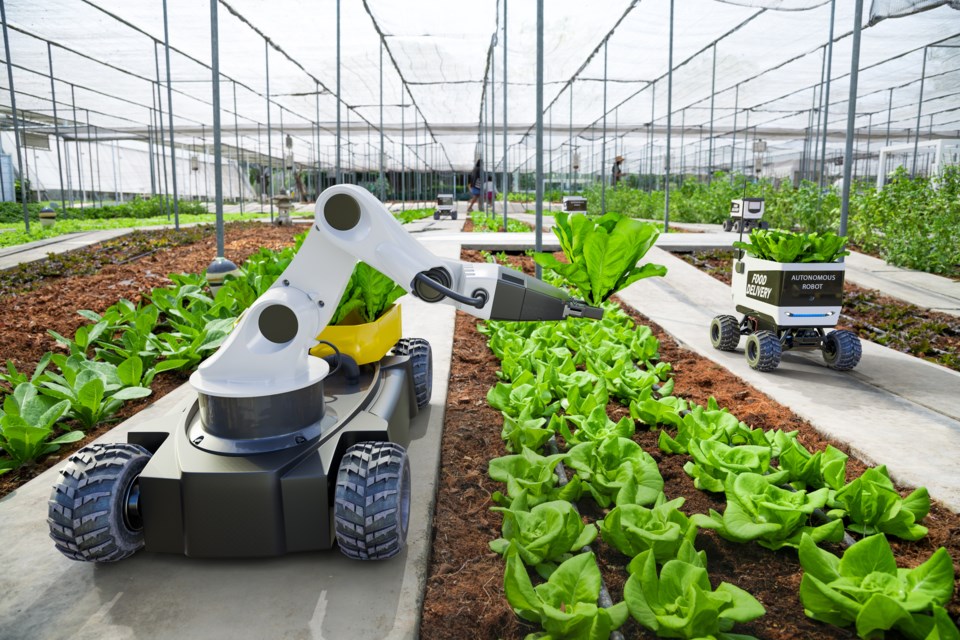Province to reduce the carbon tax on natural gas and propane at point of sale rather than sending out rebate cheques
A new partial carbon tax exemption will better support greenhouse growers in British Columbia by allowing them to more quickly get back much of their money, said an industry leader.
Natural gas or propane to heat greenhouses and supply carbon dioxide to grow plants is one of the industry’s largest expenses, said Linda Delli Santi, executive director of the B.C. Greenhouse Growers’ Association. The exemption will apply an 80 percent reduction in the tax at the point of sale, replacing the previous Greenhouse Carbon Tax Relief Grant as of April 1.
“I mean, it’s really nice to get a big cheque once a year for the carbon tax relief, but really, it’d be better for your cash flow to get it every time you buy your gas. And so, we made the business case for it and the province obviously agreed, and they put in place the same relief grant as we already get, but now we get it at point of sale instead of having to apply for it a year later.”
Fuel sellers are expected to implement their own point of sale processing systems. The new approach will ensure more stability for greenhouse growers, allowing them to better gauge their cash flow to finance or expand their businesses, said Delli Santi.
However, she was irritated by how the exemption was announced in a news release March 31 by the provincial government.
“I’m a little annoyed with how they worded it because it sounds like we just recently got a rebate or relief from the carbon tax, and that’s not true.”
Similar to the partial exemption, the Greenhouse Carbon Tax Relief Grant also covered up to 80 percent of the carbon tax for eligible growers, she said. The grant was implemented as a permanent measure starting in 2013.
Delli Santi was also concerned by the erosion of such tax relief because of the ongoing increases in federal carbon taxes. They are slated to rise to $170 per tonne of emissions by 2030, up from the current $65 per tonne, “and that’s something that’s going to cost my members, even at 20 percent, a lot,” she said.
Although carbon taxes are designed to encourage people to switch to other forms of energy, it is difficult for greenhouse operators to find other sources of carbon dioxide besides natural gas to grow plants, said Delli Santi. Shortages have made options such as liquid CO2 hard to obtain, she said.
Greenhouse growers are instead looking for further carbon tax relief under Bill C-234, which is a federal private member’s bill that will exempt natural gas and propane used for grain drying, feed preparation, irrigation and heating or cooling of greenhouses and barns. The measure is being reviewed by the Senate after passing third reading March 29 in the House of Commons.
“And that will help nationally because then we would be 100 percent exempt from paying the carbon tax, and that would acknowledge food security and needing to produce as much as you can at home without having to bring it in,” said Delli Santi.
As much as 70 percent of the B.C. greenhouse industry’s output is also exported to countries such as the United States depending on the crop, she said. Higher prices could affect the competitiveness of exports in such markets.
Greenhouse growers are a key contributor to B.C.’s economy, supplying fresh vegetables such cucumbers, tomatoes and peppers for about 10 months per year, said the provincial news release. “B.C.’s floriculture and nursery industries grow approximately 80 million greenhouse flowers and 50 million potted plants per year.”
Commercial producers are eligible for the partial exemption if more than 90 percent of their greenhouses are being used to grow vegetables, ornamental flowers or plants, and forest seedlings or nursery plants excluding cannabis. They must also have sold more than $20,000 in eligible plants in 2022, and they must expect the same revenues this year.
“We do our best to produce healthy, high-quality food for Canadians and where we export, which is the U.S. mostly, and contributing to food security and creating jobs in our sector,” said Delli Santi.




